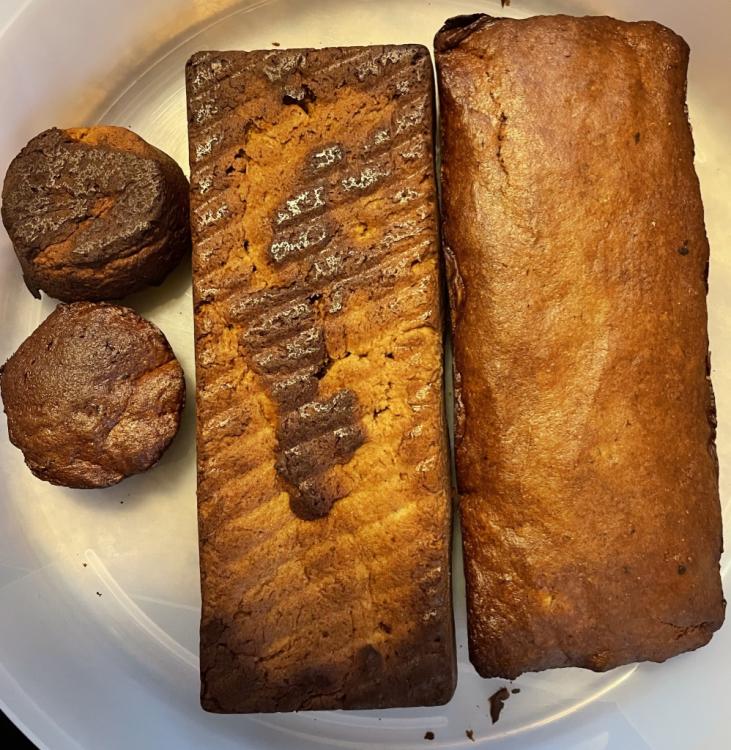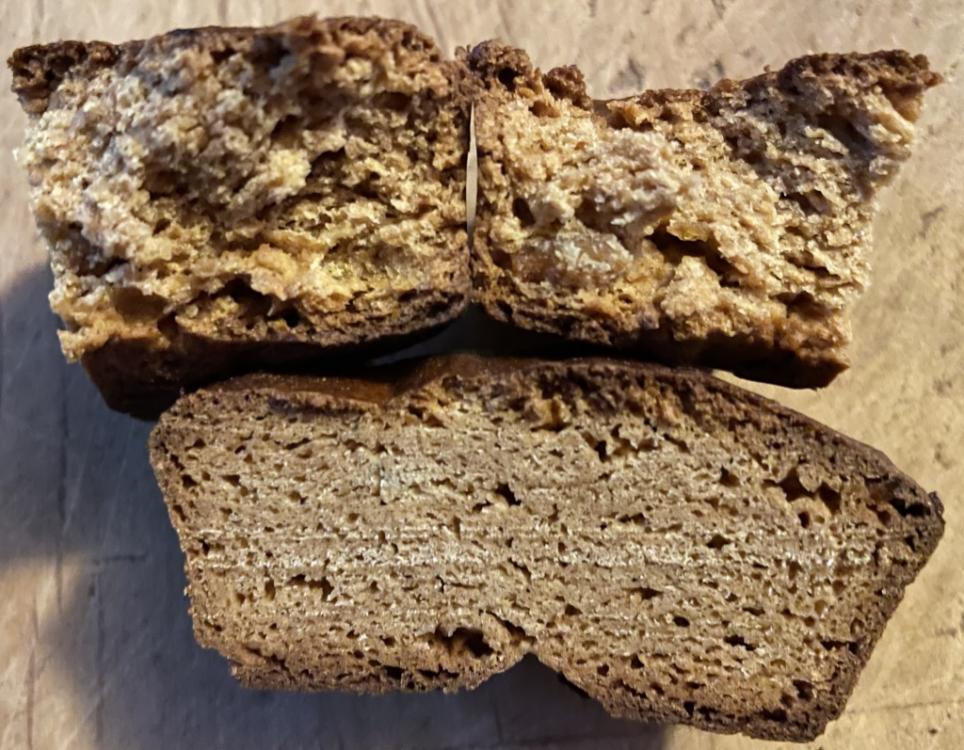Inspired by discussion in another forum, I found Jeffrey Hamelman's recipe for lebkuchen on ckbk.com (from Bread), which is quite similar but richer than the version linked above from Wild Fermentation. I used Hamelman's as my starting point, and decreased the quantity because it was an experiment, used fresh-milled whole rye flour because that's how I roll, and it was quite an interesting process.
I mixed honey and flour without heating the honey first, and put the quite firm dough into a half-gallon mason jar (I would not do that again because it was quite hard to get it back out!), put on a lid but left it a bit loose. And then I put it on a bottom shelf of the kitchen, and put a reminder on my calendar to check it out in 3 months. It did not visibly change in that time.
Then I prepped everything else to be mixed into the dough. I chopped dried pears (I prefer dried fruit to citron in confections) and candied ginger (TJ's 'uncrystallized ginger' is softer and less sugary than more easily available harder versions with thicker coatings of sugar) in the food processor with some unbleached all-purpose flour to keep the pieces separate. Unfortunately the pears were softer than usual and I was wary of adding too much flour so they were more pasty separate/fluffy bits.
I dissolved the ammonium carbonate and the baking soda in cream instead of milk because I had some extra cream.
And I added extra cream and water because the long-aged/fermented dough was just too hard to mix; my fresh whole grain flours need more water than the usual refined flours and I expected this. I should have broken the hard dough up smaller first, and I added the spices, liquid and dried ingredients all together so again, the dried fruit and ginger got pulverized by the long mixing needed to really break up the aged/fermented dough.
Finally, I overbaked the result, so there is a relatively hard crust on the outside.
But despite all that, they're pretty good, and while I usually find cookies made without butter and/or nuts sadly lacking, these have a fine depth of flavor that must come from the long aging. I also expected them to be very sweet--equal weights of honey and flour, oh my--but they feel well balanced. I'm now very curious to know if there is some enzymatic or microbial activity that breaks down some of the fructose so it isn't so sweet.
Another surprise: I was quite far along in the process before I realized that this version includes no ginger or cloves--unlike virtually every gingerbread recipe I've encountered before. But mine got the candied ginger and maybe that's enough. I like them enough to try again...but I'm not sure if I'll use ginger or cloves this time. I've got several months to decide!
Here's what I ended up doing....but as noted above, I'll do some things differently next time.
500 grams fresh whole rye flour
500 grams honey
Mixed until smooth and aged 3 months covered but not super tightly sealed in my Los Angeles kitchen with temps 60s-70s throughout.
When preparing to bake the lebkuchen:
100 gram TJs uncrystallized ginger
1 tablespoon unbleached flour
Chopped in food processor to very small individual bits
200 grams dried pears
1/4 cup unbleached flour
Chopped in food processor (may need a bit more flour next time to avoid pear paste)
about 75 grams (4 large) egg yolks
1 teaspoon salt
about a tablespoon of lemon zest
1 teaspoon ammonium carbonate
1/2 teaspoon baking soda
4 teaspoons ground cinnamon
2 teaspoons ground coriander
1 teaspoon ground aniseed
1/2 nutmeg, grated (about 1 1/2 teaspoon of grated nutmeg)
1 teaspoon black peppercorns, ground
1/2 cup cream
1/4 cup water
I scooped the dough out of the jar (bending a few spoons and spatulas in the process, maybe I can wrap the dough in a cylinder of plastic wrap and stick that inside the jar, so it still gets the protection against insects from the canning-jar lid but is easier to remove at the end for next time) and broke it up to no more than walnuts sized pieces in the bowl of my kitchenaid mixer.
I foolishly added the chopped pears and ginger and eggs at the same time, and it was ugly lumpy solids-in-wet stuff for a very long time, mixing on low power (with one or two breaks to cool down my mixer--this was HARD work for the moter).
I dissolved the spices and leavenings in some of the cream, and mixed that in, and kept adding a tablespoon more here and there, ran out of cream, and added water, and mixed until the dough was more or less smooth--but still firm enough that never left low speed. The ammonium rendered it unpleasing to taste so I wasn't sure what I had at that point.
I scaled the dough to as carefully as possible match Hamelman's recommendations of baking it in loaf pans to speed baking and avoid overdone crusts, and ended up doing a bunch of algebra to figure out how many grams to a muffin cup when I didn't have enough loaf pans. I pressed the dough into the pans by hand--and was surprised afterwards to see how lumpy the bottoms were when the tops smoothed pretty nicely.
I also messed with the baking temps because I was too lazy to remove my baking steels from the oven. I won't be so lazy next time. And I probably will not use the convection setting either. The thickness of the crusts on this first batch are not very pleasing. I baked them 350 for 15 minutes and 20 more minutes at 300.
In spite of being less than beautiful, and some foolishness planning out the recipe, they're really quite tasty. They're dense but chewy and fruity and spicy.
The recipe made enough for 2 narrow loaf pans (8.5 x 3 inches) and a dozen muffin-sized pieces (2 inches diameter standard sized cups). It's about 1/2 inch thick.
(cut with serrated knife one direction, and torn open the other way)





